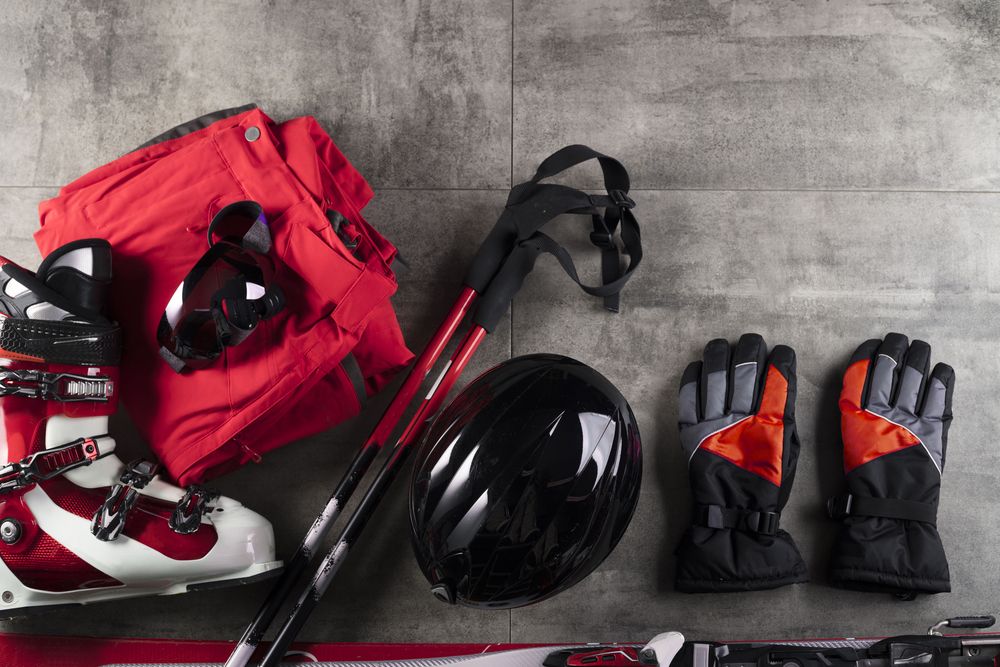Skiing is more than just a winter sport—it’s a thrilling journey through snow-capped peaks and crisp mountain air. Yet this excitement can quickly falter if you’re grappling with uncomfortable boots, unwieldy skis, or inadequate clothing. Having the right ski gear makes all the difference in keeping you warm, safe, and confident on the slopes.
1. Determining Your Skiing Style and Level
Before diving into specifics, identify your skiing style and experience. Beginners require gear that fosters control and learning, whereas advanced all-mountain riders may need versatility and high-end performance. Freestylers seek different specs than backcountry explorers.
Questions to Ask
- Skill Level: Are you brand new to skiing, a cautious intermediate, or someone who confidently tackles challenging terrain?
- Terrain Preference: Do you frequent groomed runs, fresh powder off-piste, terrain parks, or steep backcountry bowls?
- Frequency: How often will you ski? Occasional holiday trips differ from weekly slope visits—gear investment may vary accordingly.
2. Finding the Right Skis
Skis are your direct connection to the snow, influencing balance, speed, and maneuverability. With different shapes, lengths, and flex patterns available, picking suitable skis is crucial for comfort and enjoyment.
Key Considerations
- Length: Generally, skis for beginners or all-mountain recreational use come up around chin to nose height when stood upright. Shorter skis are easier to turn, longer skis aid stability at speed.
- Width (Underfoot): Wider skis (95–110mm underfoot) float better in powder, while narrower skis (70–85mm) excel on groomed runs. All-mountain skis (85–95mm) strike a balance for varied conditions.
- Rocker and Camber:
- Camber: Traditional arch underfoot, providing edge grip on hard snow.
- Rocker (or early rise): Tips and tails curve upward, enhancing float in powder and easier turning. Many modern skis combine both for versatility.
- Flex: Softer flex is forgiving and easier for beginners, while stiffer skis suit advanced skiers seeking responsiveness at higher speeds.
3. Ski Boots: Comfort and Performance
No piece of gear affects your skiing day more than boots. Ill-fitting boots can lead to pain or poor control on the slopes, undermining technique and enjoyment. Conversely, a properly fitted boot helps translate your every movement into precise ski control.
Fitting Essentials
- Flex Rating: Usually indicated by a number (e.g., 70 to 130). Beginners or lighter skiers may want a softer flex (70–90), while advanced, heavier skiers might prefer stiffer boots (100+).
- Last (Width): The interior width of the boot. Narrow lasts (97–98mm) suit slimmer feet or performance skiers, while wider lasts (102mm+) accommodate broader feet.
- Footbed Support: Custom insoles can provide better arch support, aligning your foot for improved balance and reduced fatigue.
- Heel Hold: Check the fit around the heel and ankle—snug but not painful. Too much movement leads to instability.
4. Bindings: The Crucial Link
Bindings connect your boots to the skis, releasing when necessary to minimize injury risk. They should be compatible with your boots and set according to your weight, skill level, and skiing style to ensure both safety and retention.
Key Binding Factors
- DIN Setting: This standard determines release tension. Beginners or lighter skiers typically need lower DIN settings; advanced or heavier skiers require higher to prevent premature release.
- Brake Width: Should match or be slightly wider than your ski’s waist width.
- Boot Compatibility: Ensure the binding model suits your boot sole type—especially if you have specialized boots (e.g., alpine touring soles).

5. Ski Apparel: Layering and Protection
Cold, wet conditions can rapidly sap enjoyment if you’re not dressed appropriately. Ski clothing is about layering—maintaining warmth without overheating—and providing waterproof, breathable outer shells.
Clothing Breakdown
- Base Layer: Moisture-wicking materials (like merino wool or synthetic blends) keep skin dry and regulate temperature. Avoid cotton, which traps moisture.
- Mid Layer: Fleece or down for insulation. Pick thickness depending on weather—thinner for mild days, thicker for subzero conditions.
- Outer Layer (Jacket and Pants): Waterproof, windproof shells with breathability. Look for sealed seams, adjustable cuffs, and ventilation zippers.
- Accessories: Quality ski gloves or mittens, ideally waterproof with insulation. A beanie or headband under your helmet can provide extra warmth.
6. Helmets, Goggles, and Safety Gear
Protecting your head and eyes is non-negotiable. Helmets drastically reduce the risk of head injury, while goggles ensure clear vision in shifting mountain conditions.
Helmet Essentials
- Fit: Should be snug all around, without pressure points or wobbling.
- Ventilation: Adjustable vents help regulate temperature.
- Safety Standards: Look for certifications like ASTM F2040 or CE EN1077, indicating tested impact protection.
Goggle Considerations
- Lens Tint: Lighter tints or high-contrast (rose, yellow) for overcast days, darker or mirrored lenses for bright, sunny conditions.
- Anti-Fog: Many goggles have double-layer lenses and coatings to reduce fogging.
- Helmet Compatibility: Goggle shape should fit well with the helmet to avoid gaps or pinching.
7. Renting vs. Buying Gear
Ski gear can be expensive. If you’re new, renting might let you explore various skis and boots before committing. If you ski frequently, purchasing becomes cost-effective and ensures consistent, customized gear.
Rental Pros and Cons
- Pros: No major upfront costs, can try different brands, convenient for occasional trips.
- Cons: Unfamiliar setups each time, potential for poorly maintained equipment, rental lines can be time-consuming.
Buying Pros and Cons
- Pros: Personalized fit, reliability, no last-minute rush to find your size, cost savings if you ski multiple times a season.
- Cons: Higher initial investment, storing and transporting gear off-season.
8. Maintenance and Storage
Proper upkeep ensures your ski equipment remains in good shape season after season. Neglected skis can lose edge grip, while boots can develop unpleasant odors or warping.
Basic Care
- Ski Tuning: Regularly sharpen edges and wax bases for smooth gliding and better control.
- Boot Care: Remove liners to dry thoroughly after each day. Avoid direct heat sources that can deform plastic shells.
- Off-Season Storage: Store skis in a cool, dry place; slightly reduce tension on bindings if recommended by the manufacturer.
Choosing the right ski gear can significantly elevate your experience on the slopes—transforming moments of frustration into pure exhilaration. By focusing on skis that match your skill and preferred terrain, boots that fit snugly but comfortably, and layered clothing that keeps you warm yet flexible, you’ll set a solid foundation for any winter outing. Don’t forget essential safety gear—helmets and goggles can literally be life-savers, while quality layering helps you stay comfortable in shifting mountain weather.
Whether you decide to rent first to test the waters or buy a comprehensive setup right away, do a bit of research and consider professional fittings for boots. Remember: well-maintained gear is reliable gear, so tune and store it properly to enjoy it for multiple seasons. With the right equipment tailored to your needs, you’ll spend less time fussing and more time carving turns on the slopes, fully savoring the thrill of winter’s snowy playground.


